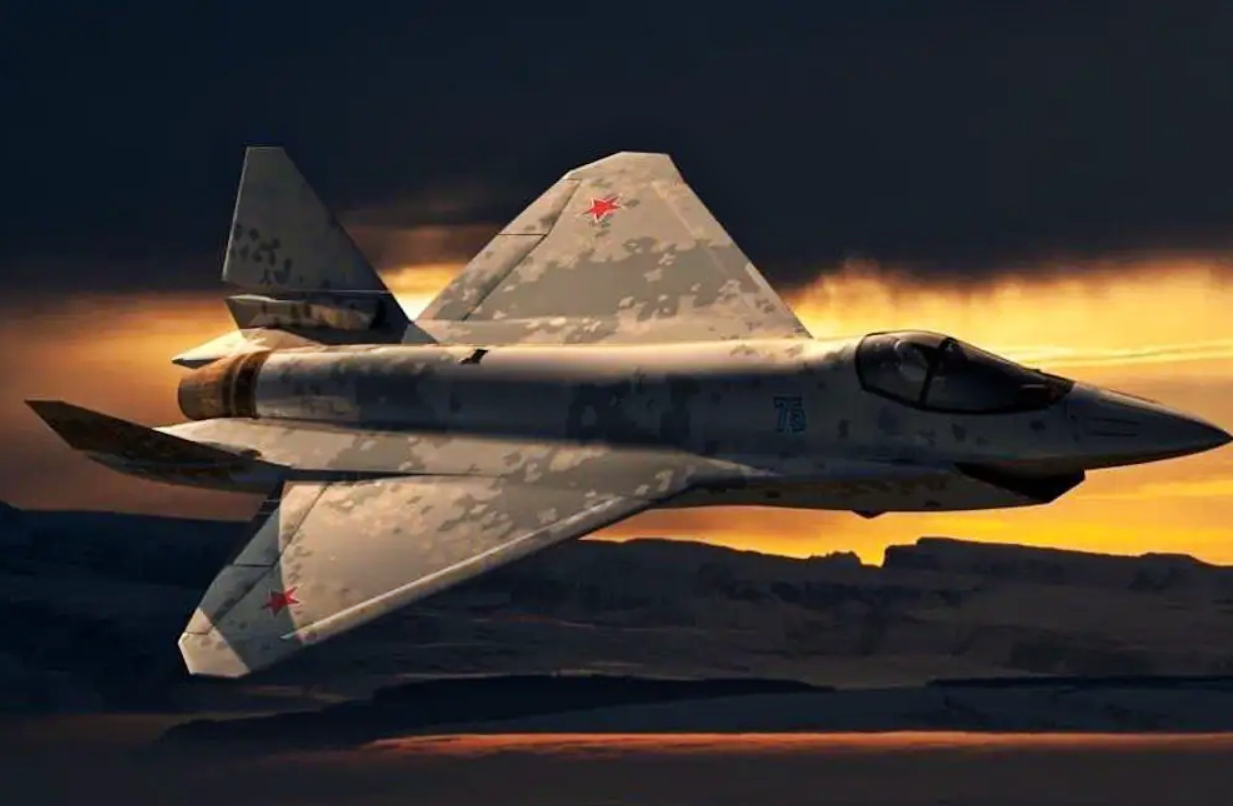Russia has patented a unique paint and camouflage scheme exclusively designed for the under-development Su-75 Checkmate. It allows the aircraft to be indistinguishable from the shape of the clouds and ground above and below it.
The effort to make the aircraft undetectable by preventing visual identification is a unique approach in stealth warfare doctrine that also hints at the role and manner in which the jet is likely to be employed.
The jet has primarily been designed as a stealth/low-observable fighter in the lightweight, tactical, single-engine class with a concerted export intent for countries that cannot afford the costly F-35 Lightning II.
A previous EurAsian Times analysis noted how the Russian fighter is likely to end up competing with the Chinese J-31 twin-engine stealth fighter, which, too, is being promoted heavily for international sales among low-income developing and under-developing countries.
Shapeshifting Paint Scheme?
According to TASS, the United Aircraft Corporation (UAC) has patented a “misinformation-distortion coloring” for the Su-75 Checkmate Light Tactical Fighter (LTS). The term “misinformation” has been quoted through online automatic page translation features. Given the context, it means concealing or misrepresenting visual features rather than digital data.
The coloring paint/camouflage scheme is “intended to complicate the visual recognition of the type of aircraft and predict its possible maneuvers during short-term observation, as well as to complicate the search and tracking of an aircraft against the background of various underlying surfaces and cloudy skies.”
The description and diagram of the aircraft contained in the patent document “correspond” to the full-scale model of the Checkmate unveiled during defense exhibitions and official images.

“This painting scheme is intended to distort the silhouette of an aircraft with its visual substitution for the silhouette of a plane of a different type and smaller size to make visual identification difficult.
“Simultaneously, it camouflages this silhouette against the background of the underlying earth’s surface and clouds. The painting uses unique color spots and shapes and creates zones of different brightness to shift the visual emphasis from the outline of the aircraft to its blurred, reduced, and deformed likeness,” the document further states.
Tactical Utility
This means the painting scheme addresses the visual identification component of detecting and tracking stealth aircraft, where the contours of the design make it appear like a different aircraft. If not another plane, it at least becomes challenging to identify the aircraft conclusively.
But this raises the question of under what circumstances an adversary air force employs visual identification techniques involving overhead drones and satellites with electro-optical reconnaissance cameras.
It assumes that the Su-75 Checkmate will have already bypassed all radio-electronic and infrared detection systems used by NATO, leaving visual identification as the only option. Russia, therefore, presumably aims to eliminate even that alternative to keep the Su-75’s arrival a complete surprise.
A technical counter-argument could be that the shape-distorting feature is redundant mainly because any aircraft that cannot be identified, even visually, simply has to be the Su-75. These questions will be clarified once more information becomes available on the Su-75 program and possibly when the first testing prototypes are ready.
Revolutionary Aircraft
The Su-75 Checkmate, also known as the Sukhoi Light Tactical Aircraft (LTS), is a fifth-generation, single-engine, stealth fighter aircraft developed by Russia’s Sukhoi Design Bureau (SDB).
It was first unveiled at the MAKS 2021 air show. The aircraft is not an entire stealth aircraft with radar-absorbent paint and materials like the J-20, F-22, or F-35. It instead falls in the low-observable (LO) category, designed to have low radar visibility and infrared signature.
It has a diamond-shaped wing, V-tail, and underslung air intakes – a rare configuration for Russian fighters – with the nacelles fusing with the lower underbelly fuselage. The design is said to contribute to its low detectability. The aircraft also has an advanced avionics suite, including a full-glass digital cockpit, a helmet-mounted display, and a cueing system.
Reports said it is expected to fly on the Izdeliye 30 engine – the newer Stage 2, AL-51F-1 powering the latest batch of 10 Su-57s. The engines are supercruise capable, which means they can attain supersonic flight without afterburners.
This engine also provides a high dry thrust of 11 tons (107.9 kN) and 17 tons (167 kN) with the afterburner, besides fuel efficiency. The engine also features thrust vectoring exhaust nozzles, which enhance maneuverability and pull tight turns with short radiuses, helpful during Within Visual Range (WVR) dogfights and evading missiles.
Regarding armament, the Su-75 Checkmate is equipped with an internal weapons bay that can carry a variety of air-to-air, air-to-surface, and precision-guided munitions. The aircraft’s wings and body also have external hardpoints, which can bring additional weapons or fuel tanks when stealth is not a priority.
The operational range of the Su-75 Checkmate is believed to be around 2,800 kilometers without refueling, further extendable with external fuel tanks or air-to-air refueling.
Modifications Through Other Patents
In July 2023, the United Aircraft Corporation (UAC) filed a series of patents with Russia’s Federal Intellectual Property Service (FIPS), revealing modifications to the original Su-75 design, including a two-seat tandem variant and an unmanned variant.
This modification involves extending and angling the wing’s trailing edge, which results in an increased wing area and potentially a slight reduction in the aircraft’s rear radar signature.
Additionally, there seems to be a slight advancement in the engine installation. The fuselage has also undergone modifications, seemingly increasing the internal capacity of the aircraft.
This change suggests a possibility of enlarged side armament bays for housing short-range air-to-air missiles or an increased internal fuel capacity for the Checkmate, or perhaps both modifications have been implemented.
UAC has also introduced the concept of a “single-engine two-seater stealth aircraft.” Similar to other two-seater Sukhoi models, the modifications incorporate a tandem cockpit configuration, with the rear seat elevated to provide improved forward vision.
- The author can be reached at satamp@gmail.com
- Follow EurAsian Times on Google News




